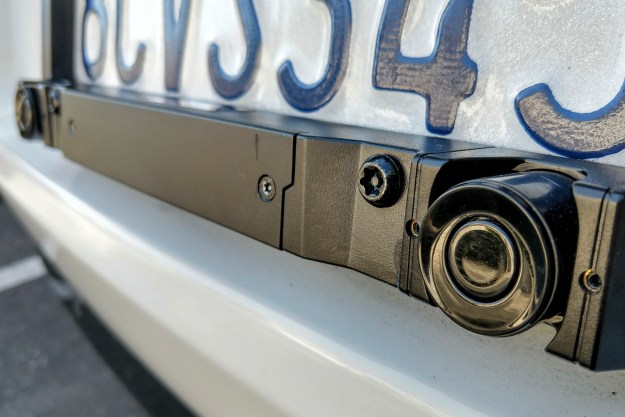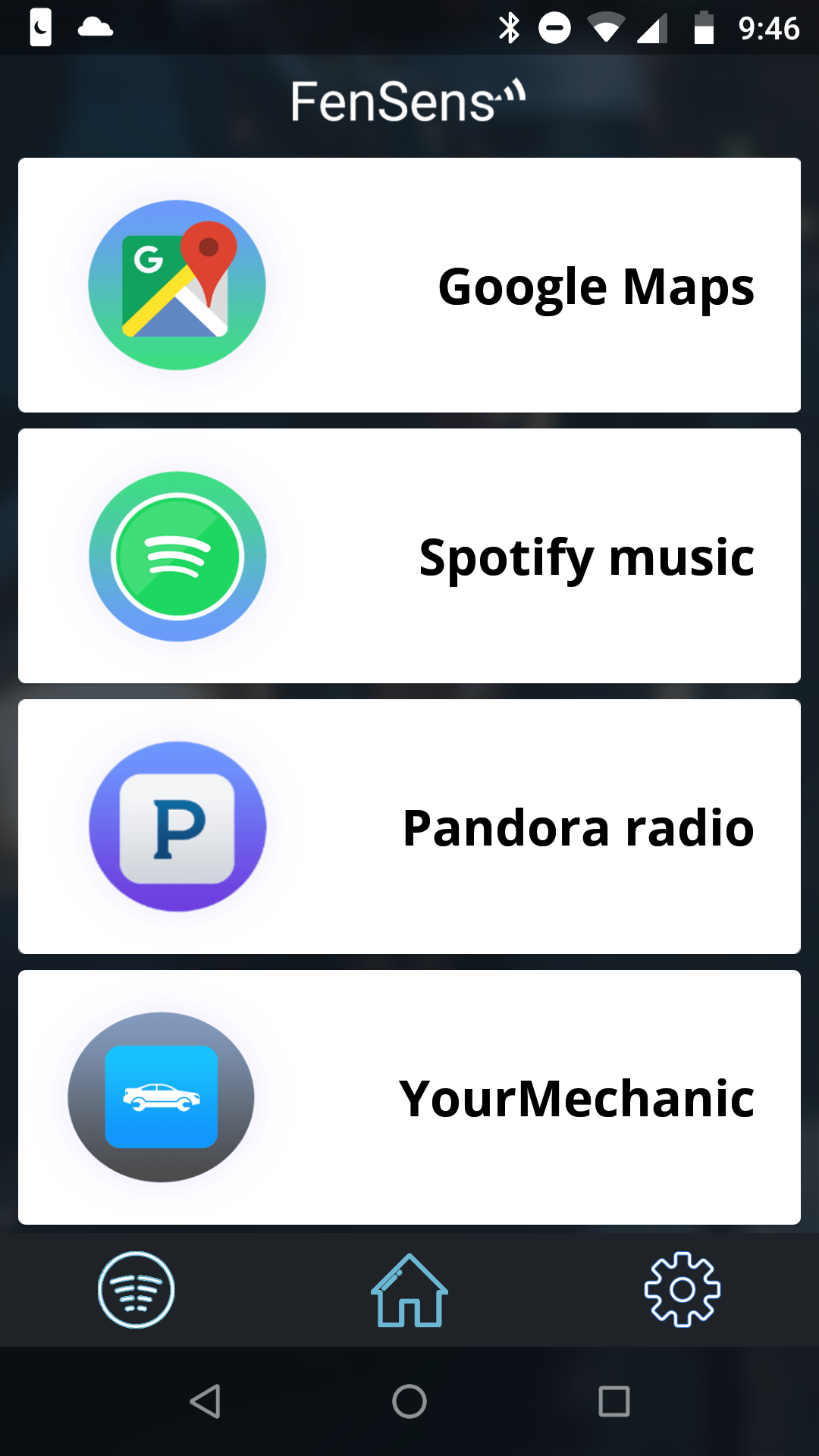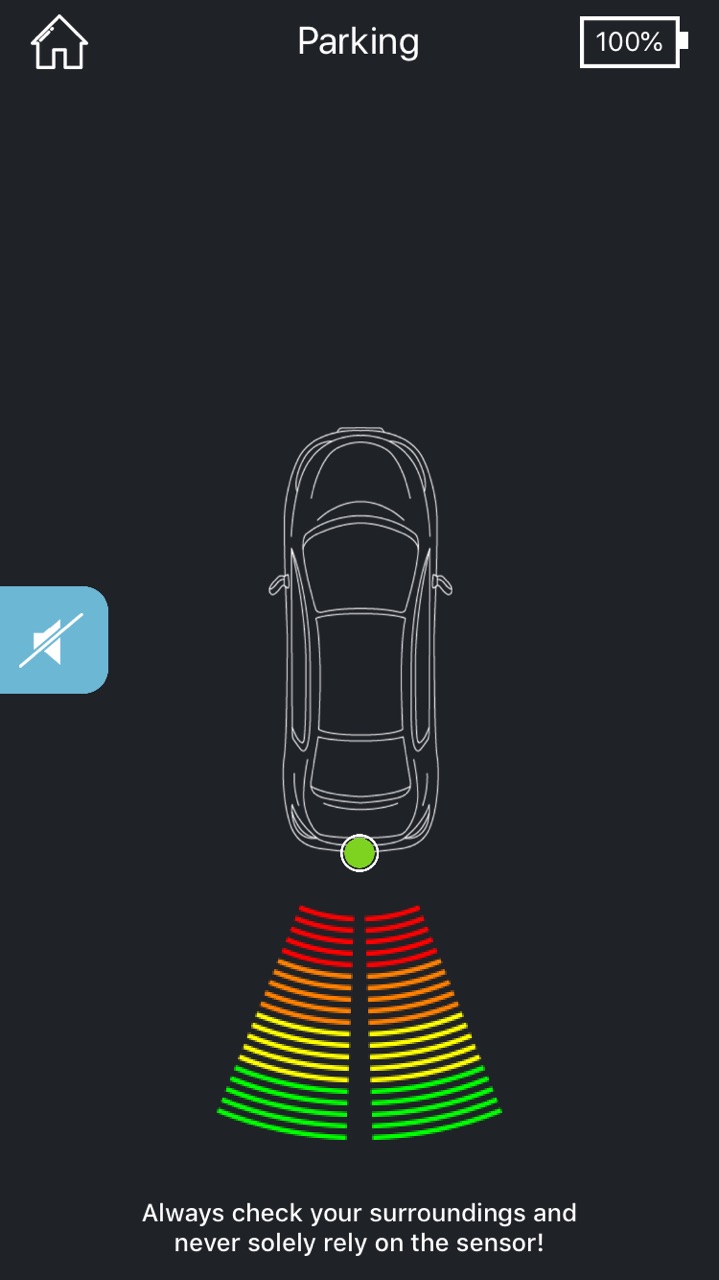
“If you're looking for a modern parking sensor solution, the FenSens is absolutely worth the cost”
- Pinpoint accuracy, rivaling OEM sensors
- QuickLaunch button to open app quickly on Android
- Can pair multiple brackets to cover front and back
- No wiring allows easy and fast setup
- Safety screws can be difficult to remove, even with included tools
- iOS application can’t launch with button
With the mandatory inclusion of back-up cameras on all new cars starting in 2018, many motorists driving older cars are missing out on the latest in standard safety tech. Instead of relying on an old-fashioned mirror, it may be time to step up to a sensor.
There are various systems that we have tested in the past to update your car, but many require a hard-wire installation and unsightly display screens to add a back-up sensor or a camera. Thankfully, the new FenSens Smart Wireless works wirelessly to warn you of a potential accident. But can this aftermarket solution compete with the real thing?
Quick and easy installation
Set down the wire cutters; you will only need a screwdriver and about five minutes to install the FenSens licence plate frame. For $120, your kit includes a single license plate frame with built-in sensors, a set of batteries, a magnetic phone mount, a TAP QuickLaunch Button, and the wrenches you’ll need to remove the security screws. The only trouble we had during installation was actually removing the security screws with the included wrenches. If you are not careful, you may strip the screws and leave the battery cover stuck.
Once the batteries are installed, you simply need to choose whether to mount the FenSens sensors around the front or the rear license plate. That’s right: because of the license plate bracket design and the lack of wires, the system can be mounted at the front or the rear of your car, or both if you buy two.
Once you have connected the plate bracket to your car, you will need to download and open the FenSens application and add a new Sensor Plate to your account. Pairing was simple and you only need to tell the app if the bracket is mounted at the front or rear of your vehicle, and the distance between the sensor and your car’s bumper. Once added, you can instantly see the radar show up and do a few test runs to make sure the sensor is calibrated to correctly warn when your bumper is close to an object. Best to use something soft when testing.
Ready for radar
The FenSens Smart Wireless Parking Sensor includes a Bluetooth button that can attach to your steering wheel to easily switch your phone to the senor. Our test button was unfortunately dead on arrival and would not pair with the mobile app. A quick note to support and a (free) replacement battery later, we could discover the device and pair with the FenSens app.
On Android, pressing the Bluetooth button opens the FenSens application and jumps right to the radar screen to allow you to park your car. For Apple users, the button can only prompt a notification that allows you to jump the radar screen and then switch the home screen of the app when finished. Also, if the app is force closed, you won’t see notifications and you’ll need to open it manually. This limitation in iOS nullifies some of hands-free convenience that you find on Android.
In addition, both applications also show a notification when your car is nearby to let you know that the Smart Wireless Parking Sensor plate is within range and ready to help. This notification can become annoying if your house is attached to your garage and can, thankfully, be disabled.
Put the car in reverse
Once the application is open to the radar screen, you will see a visual indicator ranging from red to green, indicating your distance on the left and right portions of the car. A loud beep will also sound with increasing urgency as you move closer to an object.

The application simulates what you might find in a modern car perfectly. When compared to a similar OEM system in a BMW i3, for example, the FenSens system was just as accurate in relaying depth.
After you have hit the road, the FenSens application even has a screen for the most popular mobile apps for your drive. This includes apps such Google Maps, Apple Maps, Spotify, Pandora, and AAA Mobile.
Warranty information
The team at FenSens offers one year of coverage from manufacturer defects on all products. We were able to experience their support in action with a dead battery in the QuickLaunch button. The team mailed a new set of batteries at no cost and it arrived within three days.
Our Take
The lack of wiring makes this one of the easiest and most convenient solutions to a backup sensor that we have ever experienced. While the FenSens plate is slightly bulky, it isn’t as obvious as many aftermarket cameras and won’t jump out as an aftermarket accessory. The iOS limitations may make this a tougher sell for Apple users, but on Android it’s worth the cost.
Is there a better alternative?
No, cheaper wired alternatives are often inaccurate and unsightly. The QuickLaunch button and smartphone integration make the FenSens integrate perfectly with your normal routine. However, iOS users may be bothered that they have to manually open the app through a notification at times.
How long will it last?
In the short term, the batteries inside the plate should last five months without concern. In the longer term, the application and overall tech is simple and should outlast the life of your car. Or, at least last until you get a new car.
Should you buy it?
Yes, if you are looking parking solution for your older car and understand how the FenSens will work with your car and smartphone, then it is absolutely worth the cost.









